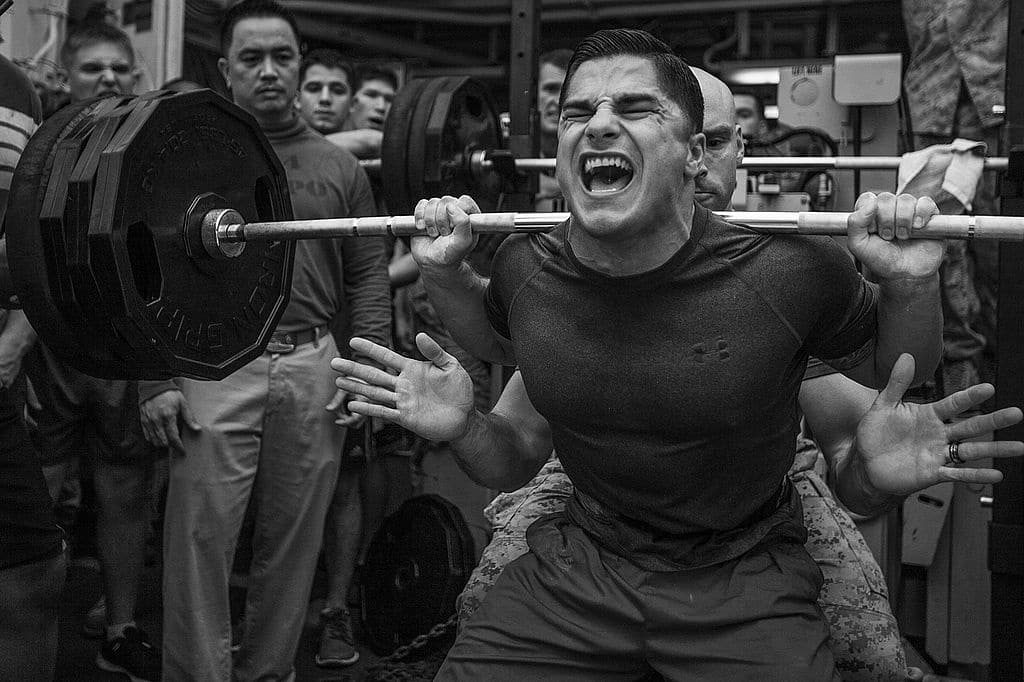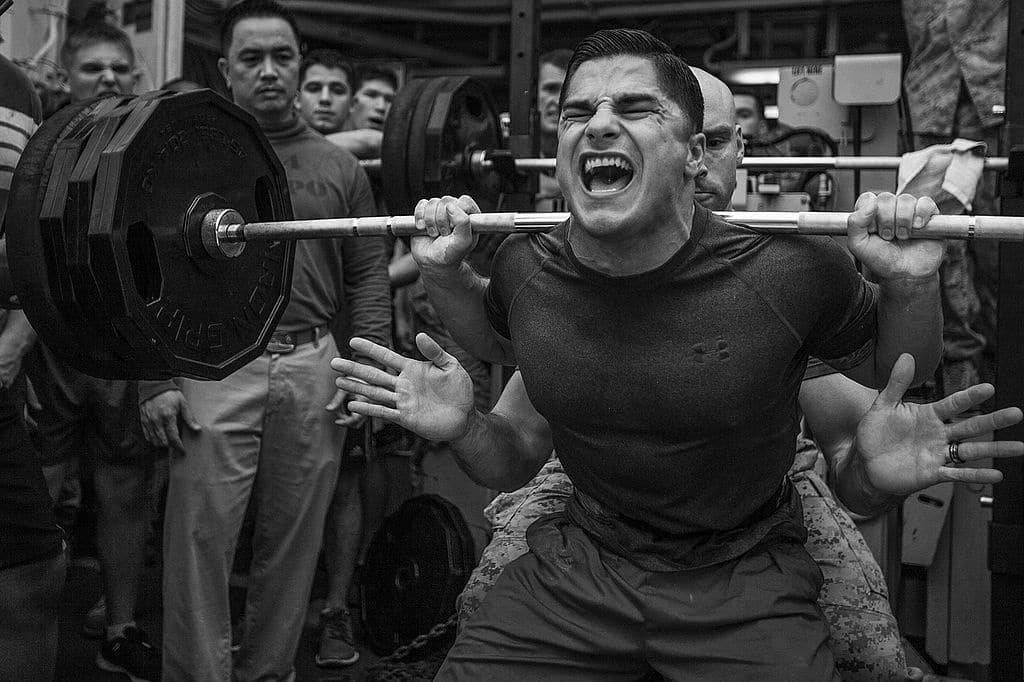
The two things that will get and keep you in shape
Christian Segers, Assistant Editor
Jace Manning, Marine Medium Tiltrotor Squadron (VMM) 263 (Reinforced), 22nd Marine Expeditionary Unit (MEU), air traffic control staff noncommissioned officer in charge and native of Belton, Texas, squats 385 pounds during a weight-lifting competition aboard the USS Bataan (LHD 5), at sea, April 20, 2014. Photo courtesy of Wikimedia Commons.
When someone embarks on a journey towards meeting their fitness goals, they typically have questions regarding which exercises to perform so that they can “get in shape.” Specifically, individuals struggle to choose between that of a cardio based workout and a weightlifting one. However, studies have shown that in order to maintain a healthy lifestyle, it is important that people who wish to stay in shape, construct a regimen that incorporates both aspects of working out.
Although it is important to consult your personal or family doctor/physician prior to starting any new workouts that can affect your body, as a general rule, light cardio is safe for people of all walks of life. To understand how cardio compares to lifting weights, it is important to define the term.
Cardio (short for cardiovascular) is defined by bodybuilding.com as, “…any movement that gets your heart rate up and increases blood circulation throughout the body.”
Essentially, performing cardio based exercises allows your body the opportunity to work perhaps its most vital organ, which in turn, contributes to better breathing, circulation and blood flow throughout the body and increased stamina for everyday activities. Exercises in the gym that can help you focus on improving your heart health while shedding those extra pounds, include: the treadmill, the elliptical, the indoor bicycle and the seated row machine. While all of these exercises help people to achieve fitness goals, they also provide a way to workout via personal preference and are typically placed beside one another in gym settings for a quick and seamless transition between workouts.
On the other end of the equation, weightlifting provides some means for cardiovascular exercise to be achieved, but the goal of lifting is to train particular muscle groups, often split in to three, four or five day cycles, with two or more days of rest supplemented in to the mix to provide for increased muscle recovery.
An ideal method of weight training would be as follows:
Day 1. Chest & triceps
Day 2. Abs & forearms
Day 3: Rest day
Day 4: Shoulders & traps
Day 5: Legs
Day 6: Back and biceps
Day 7: Rest day
When lifting, it is critical that once one muscle is “hit” or worked out, that it is not worked again within a 48 hour time period, as this could result in injury or even long term damage to the muscle group in question. When training any given muscle, fibers are constantly being torn, which leads to fatigue in the gym. In the two days following gym activity, the muscle begins rebuilding itself, albeit, bigger than it was before. This anatomical realization is what bodybuilders or fitness guru’s are looking for when they spend long hours in the gym.
The previously mentioned weekly routine provides for the recommended 48 hours of recovery time necessary in order to build muscle mass, without a second or third day workout hitting chest or triceps inadvertently, for example. Because muscles work in a cohesive unit, it is essential that certain regimens are followed, so that a muscle is not overloaded with too much weight or strenuous activity.
Although some people swear by one or the other when it comes to cardio versus weight training, it is important that both our heart and muscle groups remain strong and healthy. As previously mentioned, the body works together as a singular unit comprised of numerous parts. However, one part of the body cannot function properly without the other, so it is imperative that the body as a whole remains in the best condition possible.

